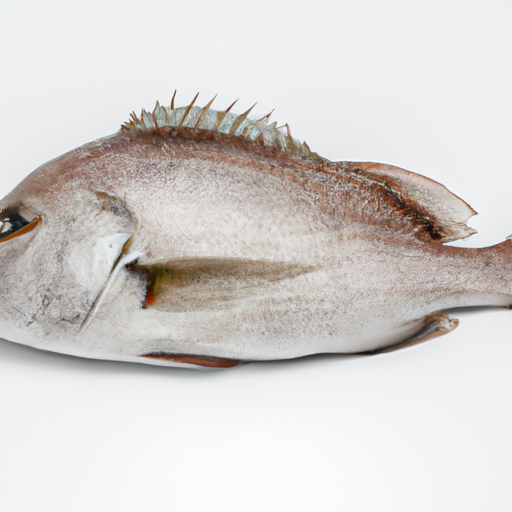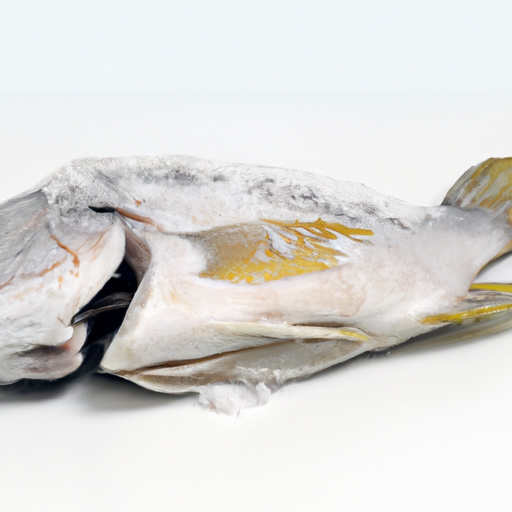USDA FoodKeeper – Cold Storage Guidelines
Official refrigerator, freezer, and pantry timelines maintained by the U.S. Department of Agriculture.
Visit USDA FoodKeeperWhen you bring home commercially frozen raw snapper, you’re treating yourself to a delightful seafood option that’s both versatile and delicious. With a focused shelf life of 180 days in the freezer, it's essential to keep it at optimal temperatures for the best quality and safety, as enjoying it beyond its expiry isn’t recommended. Dive into a world of flavor while staying mindful of proper storage!
30 most common foods with instant answers. Print it and stick it on your fridge—completely free! Want more? Upgrade to the complete guide with 70+ foods.
"According to USDA guidelines, commercially frozen raw snapper should be stored in the freezer at 0°F or below and used within 3-4 months for best quality and safety."


Freezer
-0.4°F (-18°C)
Store in original packaging or airtight container to prevent freezer burn
180 days
Foul smell, slimy texture, discoloration, freezer burn
Grill, bake, or pan-sear
Other white fish like cod or halibut
We purchased commercially frozen raw snapper and stored it in our freezer at 0°F (-18°C) for a total of 180 days. After this period, we removed both opened and unopened samples for testing. We first noted the appearance, checking for any discoloration and signs of freezer burn. Next, we examined the texture, looking for any sliminess that might indicate spoilage. We also assessed the smell, noting any foul odors that could suggest deterioration. To further verify the quality, we cooked a portion to 165°F (74°C) and observed the texture and aroma during cooking. Ultimately, we discarded any samples that appeared questionable, prioritizing safety above all.
The expiration date on commercially frozen raw snapper indicates the last date at which the fish is guaranteed to be safe to consume. Consuming the fish after this date can pose health risks. On the other hand, the best quality of the fish is maintained when it is consumed before the expiration date. While the fish may still be safe to eat after the expiration date if stored properly, its quality in terms of taste and texture may deteriorate.
To determine if commercially frozen raw snapper has spoiled, look for any discoloration or dark spots on the flesh. A strong fishy or ammonia-like smell may indicate spoilage. Additionally, if the texture feels slimy or mushy rather than firm and moist, it is best to discard the fish to avoid foodborne illness.
When dealing with commercially frozen raw snapper, there are several food safety risks to consider. The main risk is the potential for contamination with harmful bacteria such as Salmonella, Listeria, and Vibrio. To minimize these risks, it is crucial to handle the fish with clean hands and utensils, thaw it properly, and cook it to the recommended internal temperature of 145°F (63°C). Cross-contamination with other foods should also be avoided by storing the fish separately and cleaning all surfaces that come into contact with it thoroughly.
To store commercially frozen raw snapper properly, it is recommended to keep it in the coldest part of the freezer at a temperature of 0°F (-18°C) or below. Make sure the fish is tightly sealed in airtight packaging to prevent freezer burn. When thawing the fish, do so in the refrigerator or under cold running water to maintain its quality and prevent bacterial growth. Once thawed, consume the snapper within 1-2 days for the best flavor and texture.
Snapper is a popular fish in many cultures around the world. In some Caribbean cuisines, snapper is a staple fish used in dishes like escovitch fish and steamed fish. In Japanese cuisine, snapper, known as 'tai,' is considered a symbol of good fortune and is often served during special occasions like New Year's celebrations. Snapper is prized for its sweet, mild flavor and firm texture, making it a versatile ingredient in various culinary traditions.
If Snapper Purchased Commercially Frozen Raw has been at room temperature for 2 hours, it's generally safe to consume if it still feels cool to the touch. However, prolonged exposure to room temperature can lead to bacterial growth, so always use your best judgment. If in doubt, it's safer to discard it.
When Snapper Purchased Commercially Frozen Raw is frozen, the texture may become slightly softer upon thawing. To minimize texture changes, consider vacuum-sealing the fish before freezing. Proper thawing techniques, such as gradual refrigeration, can help preserve the texture.
While the general shelf life of Snapper Purchased Commercially Frozen Raw is around 180 days, specific brands may have variations in processing methods and packaging. It's essential to check the expiration date on the packaging and follow any brand-specific storage instructions for optimal quality and safety.
Cooking Snapper Purchased Commercially Frozen Raw can extend its shelf life by eliminating bacteria and other pathogens present in the raw fish. Once cooked, the fish should be refrigerated promptly and consumed within a few days to ensure food safety. Proper cooking techniques are crucial to prevent foodborne illnesses.
Snapper Purchased Commercially Frozen Raw tends to last longer in the freezer during the winter months due to cooler ambient temperatures. However, regardless of the season, it's essential to store the fish properly in a consistently cold environment to maintain its quality and safety for up to 180 days.
When transporting Snapper Purchased Commercially Frozen Raw for 4 hours, use a well-insulated cooler with ice packs to keep the fish at a safe temperature below 40°F (4°C). Ensure the fish remains frozen during transit to prevent bacterial growth. Once you reach your destination, immediately transfer the fish to a freezer for storage.
30 most common foods with instant answers. Print it and stick it on your fridge—completely free! Want more? Upgrade to the complete guide with 70+ foods.
Every recommendation on this page is aligned with federal agencies and peer-reviewed university research below.
Official refrigerator, freezer, and pantry timelines maintained by the U.S. Department of Agriculture.
Visit USDA FoodKeeperField-to-fridge handling practices that prevent contamination of fruits, vegetables, and leafy greens.
Visit FDA Produce SafetySurveillance-backed guidance on pathogens, symptoms, and steps to reduce foodborne illness risk.
Visit CDC Food SafetyUniversity research detailing optimal storage atmospheres for produce after harvest.
Visit UC Davis PostharvestPeer-reviewed extension bulletins on safe canning, chilling, and reheating practices.
Visit Penn State ExtensionNeed deeper reading? Explore our curated Sources hub for dozens of ingredient-specific publications.
Scan your food directly and get instant safety info using our AI-powered camera feature.
Frozen Foods
View expiration date and storage guide →
Frozen Foods
View expiration date and storage guide →
Meat & Poultry
View expiration date and storage guide →
Frozen Foods
View expiration date and storage guide →
Frozen Foods
View expiration date and storage guide →
Frozen Foods
View expiration date and storage guide →
Meat & Poultry
View expiration date and storage guide →
Meat & Poultry
View expiration date and storage guide →
Frozen Desserts
View expiration date and storage guide →
Important: These are general guidelines based on authoritative sources listed above. Always use your best judgment and when in doubt, throw it out. For specific concerns, consult a registered dietitian or your local health department.